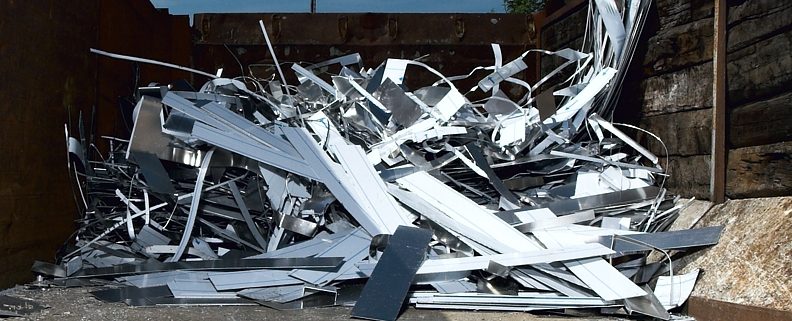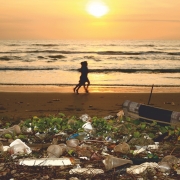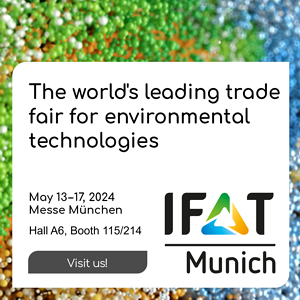Will China’s National Sword Initiative Have an Adverse Effect?
During the recent world convention of the Bureau of International Recycling (BIR) in Hong Kong, there was an important topic for the future: China’s reform of its scrap import regime and the potential adverse impact on the recycling business.
As was reported by the world recycling association, this issue was discussed in several sessions. In the second meeting of the World Council of Recycling Associations, BIR World President Ranjit Baxi (J&H Sales International, UK) not only announced that the first Global Recycling Day would be taking place on March 18 next year; the intention is “to co-ordinate pro-recycling initiatives across perhaps 50 or more countries”. He also pointed out, that the World Council of Recycling Associations would be approaching the Chinese government for a dialogue to clarify the practical implications for recyclables trading of its National Sword import control initiative.
Non-ferrous metals sector fears disadvantages
China’s reform of its scrap import regime will have potentially far-reaching consequences for the non-ferrous metals sector, the world recycling association quoted Ma Hongchang, BIR’s advisor on the country’s policy and regulatory developments. It were even possible, he told delegates in Hong Kong, that the Chinese government would go as far as to ban imports of certain items of mixed metal scrap. “The Chinese authorities have not yet issued timetables for import bans or details of the categories of scrap to be affected,” the BIR gave account. According to the information, copper and aluminum scrap are also to be discussed and would then be subjected to a “tough” review to determine whether imports could continue. “The speaker urged overseas suppliers to the Chinese market to ‘pay attention’ to the country’s scrap import policy trends and to adjust their business models accordingly, urging them to strive at all times to comply with China’s environmental protection policies, regulations and standards,” the BIR underlined in a press release.
Guest speaker Hong Yang of Minmetals, a company which handles 80,000 to 100,000 tons of non-ferrous scrap per annum, indicated to the same meeting that China’s domestic supply of copper scrap had now overtaken imports and that this trend could be expected to continue. “Scrap imports are declining all the time,” he was quoted. Domestic scrap was expected to increase by 17 percent this year alone. He emphasized that China was still the world’s leading buyer of copper scrap on the international market. Imports were “likely to continue to play an important role” as government data indicated that the country would require an annual total of 4.4 million tons of copper scrap from all sources by 2020. Copper scrap imports from Western Europe and the USA were on the decline whereas Asian countries were increasing their share of total shipments to China. And the market was consolidating around importers and enterprises with sound environmental protection practices and more sophisticated processing, Hong Yang observed.
China also constituted a huge player in the secondary aluminum market and a major consumer of imported Zorba (shredded non-ferrous scrap, predominantly aluminum), delegates to the BIR Non-Ferrous Metals Division meeting were told by Masao Montani of Daiki Aluminium Industry Co Ltd, Japan’s largest secondary aluminum smelter with affiliated companies in Thailand, Indonesia, Malaysia and the Philippines. His presentation touched on Daiki’s decision to more than triple the capacity of its smelter in Indonesia to 15,000 tons per year, to be fed by Zorba imported from Europe and the USA. India was another Asian market in which Daiki would consider staking an interest, he added.
“Panic” as China turns screw on plastic scrap imports
Taking the view regarding the next five to ten years, it was possible that China would decide to stop importing plastic scrap. That was the worst-case scenario presented by the Executive President of the China Scrap Plastics Association – Dr. Steve Wong of Fukutomi Company Ltd – in light of the country’s National Sword initiative to prohibit imports of any material that could contain contaminants and therefore lead to environmental pollution. As reported by BIR, a “lively rumour-mill was even suggesting that Chinese imports of film scrap could be halted as early as September this year”. During any hiatus in China’s imports, no other county in the region would be able to absorb the 7 million tons that the Chinese have been buying internationally on an annual basis, Dr. Wong argued. And given “yo-yoing” freight rates, the “most effective solution” for the scrap plastics market would be increased processing at source, BIR gave account. For the moment, he said, the cost of importing plastic scrap into China was “so high” and 100 percent container checking was taking place at most ports.
India was not equipped to take up the displaced tonnage if the People’s Republic of China introduced a ban, insisted Plastics Committee Chairman Surendra Patawari Borad (Gemini Corporation, Belgium) as the Indian authorities still regarded recycled plastics as “harmful to human health”. India’s imports amounted to “less than 5 percent” of those of China and import licenses were restricted to only around 30 companies. “Though the country is growing very well, I do not expect an increase in the plastics scrap trade into India,” he was cited. In an US market report also delivered by Surendra Patawari Borad, “panic” over customs clearance issues and a possible ban in China had persuaded many exporters to stay “out of the scene”. In the European report from Veolia Propreté France Recycling’s Renaud Pfund, he suggested Chinese regulatory developments would potentially restructure the market. And for the Middle East, Mahmoud Al Sharif of the Sharif Group of Companies noted that only 10 to 20 percent of used plastics were entering the recycling loop in the United Arab Emirates but that recycling awareness in the Middle East was being boosted by government-led campaigns.
Paper Division: Double headache for exporters
An “explosion” in container rates “had nearly dealt a death blow to the shipping of recovered paper,” the audience was told by its outgoing President, Reinhold Schmidt (Recycling Karla Schmidt, Germany). Freight costs for shipments between Europe and China had soared more than 1.000 US-Dollar per container – or 40 US-Dollar per ton – in the opening months of 2017. During the meeting, the discussion group also spotlighted China’s National Sword initiative to tackle illegal imports. Ranjit Baxi supported China’s desire to eliminate incoming material that was contaminated and unsuitable for use as a secondary raw material. A “zero tolerance” approach “would affect us all” as sorting systems were unable to achieve 100 percent purity, he was quoted by BIR. But at the same time, exporters from Europe, for example, “must move their quality a notch higher”. If National Sword served to deflect volumes away from China, “those tons will go somewhere”, contended Brian Taylor (magazine Recycling Today), although he also acknowledged that market problems might arise in the short term.
For European OCC and mixed paper shipments to China, a steep price decline around the start of the second quarter of 2017 had been followed by an almost immediate recovery, it was explained in the European market report from new Paper Division board member Martin Soth of Sběrné suroviny UH sro of the Czech Republic. This about-face was attributable to “lower stocks and more stable containerboard orders for mills in China” as well as to “the strength of fiber demand in Europe itself”. In his guest presentation, Nobuyuki Shiose (Daiwa-Shiryo Co., Ltd, Japan) noted a growing preference among Japanese paper mills for dealing with those fiber suppliers able to offer larger tonnages. “It is possible to get higher prices if you can offer more volume,” he said. This trend could lead to consolidation within the supply sector and create a competitive environment in which “small companies will be the losers”, the BIR gave account.
Photo: Marc Weigert
GR 22017







